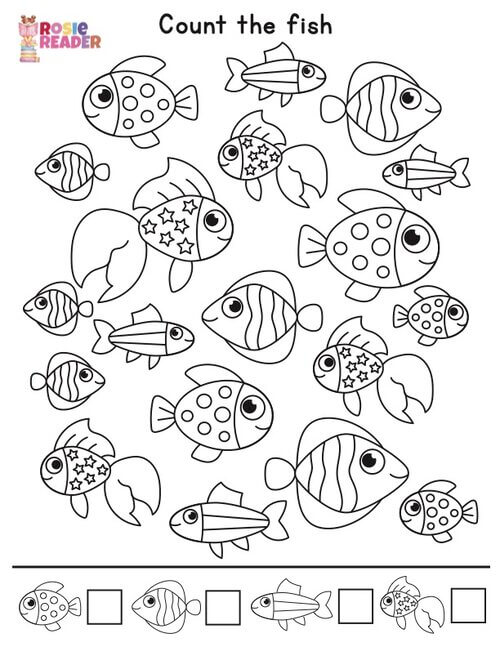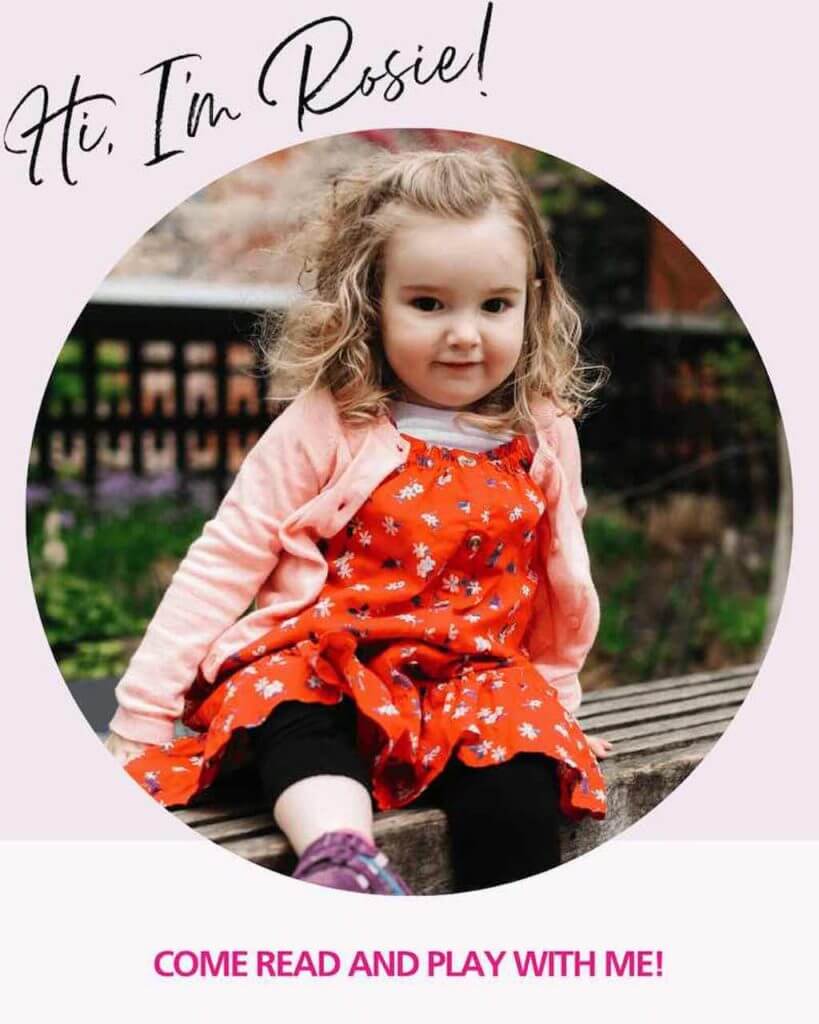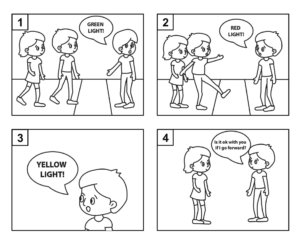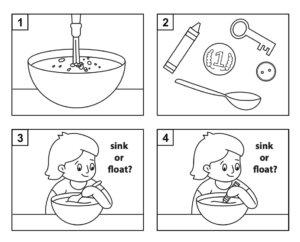Looking for a worksheet where you count the fish? Dive in! This counting fish worksheet for preschool has so many fish. How many fish do you see in total?
- Count the Types of Fish in this free prek worksheet. After, get more specific with your numbers— how many fish do you see with dots?
- Count the number of fish with vertical stripes (those are stripes that run top to bottom)?
- How many fish have horizontal stripes (those are stripes that go from one side to the other)?
- What’s the number of fish with stars?
Also, did you notice that whether we’re talking about one fish or many fish, we still say fish (and not fishes). It’s one of those unique words that you can use whether you’re referring to one fish or many fish. It works with any number. Pretty neat!
This preschool worksheet was originally created to go with the book The Pout Pout Fish, written by Deborah Diesen and illustrated by Dan Hanna, but can be used at any time that you’re looking for a counting worksheet for preschool. It also doubles as a fish coloring sheet. If you want to get creative, you can make your own coloring patterns too.
INFO FOR GROWN UPS
Why is Counting Important for Preschoolers?
The more a child gets to practice counting, the more they will learn the meaning of numbers. By starting to count early, children gain experience and understanding. Counting is a lifelong skill!
What are the Benefits of Counting with Preschoolers?
When your child learns to count, you’ll also be able to communicate differently. You might start to hear requests for 5 more minutes before bath time. Or, maybe you’ll be the one negotiating for three more bites of food before he or she eats a cookie for dessert.
Check out my other Pout Pout Fish activities:
- Count the fish – Print this counting worksheet to see how many different kinds of fish you can find in this ocean scene.
- Trace letter F worksheet – Use this free letter f printable and practice writing the letter F for Fish!
- Dot to Dot Fish – Easy dot to dot printables can be so much fun! Here’s a dot to dot pdf of a fish. Use a pencil or crayon to connect the dots in alphabetical order from capital A to capital Z. When you’re done you’ll have a drawing of a fish and a fish coloring sheet too!
For more Pout-Pout Fish activities, check out this free Pout-Pout Fish pdf! - MAKE A JELLYFISH! Follow the steps in this easy craft video to make a jellyfish using a paper plate. You’ll need colored paper and a few other supplies you probably already have around your home. (PS – check out our other youtube easy craft videos for even more 5-minute crafts.)
- MOVEMENT GAME! Have your child interpret the instructions to spark their imagination. This movement activity is inspired by the Pout Pout Fish. It encourages kids to use their imagination and pretend to be underwater sea creatures. I think you’re going to like it!
[RELATED]
Here are some of our best counting printables:
- Count the apples
- Count the doughnuts
- Count the chocolate chips
- Count the ways we are making you hungry 🙂
So, count with your fingers, count fish, or count just about anything you come across. The more you and your child count together, the more examples with numbers your child will have to pull from – and that can really add up!
Who knew so much knowledge could start with a simple activity like count the fish?!
What is the purpose of counting?
The reason we count is to give a value to an object or group of objects. When we count, we can combine the value of objects to create a greater value.
What is counting in early childhood education?
Counting means that there is an understanding that one number gives a value to a set of things. It’s important in early childhood to learn to count to understand the relationship between numbers and quantity. It’s also a lifelong skill that can be applied in many different ways and the sooner it is learned, the better.
Why is math important in early childhood?
Math is an important part of learning in childhood because it provides a tangible, and crucial, skill. Math helps young children learn to develop spatial awareness, measure things, and problem solve, which are all important life skills.




